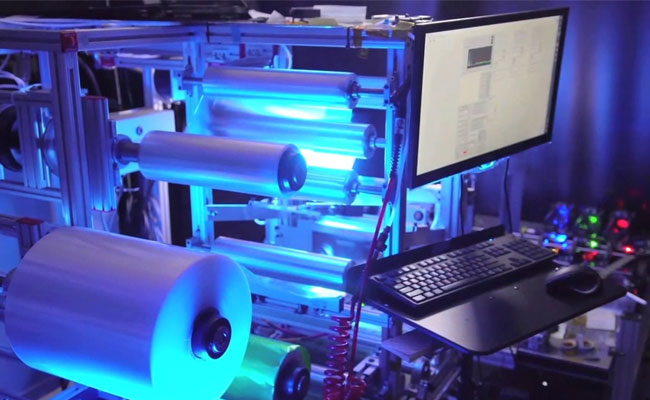Holographic Optical Elements (HOEs)
Next-Gen Display Optics for Automotive, AR, and Defense Applications
Luminit leads the way in transparent Holographic Optical Elements (HOEs), offering custom, high-efficiency holographic films for Head-Up Displays (HUDs), AR windshields, and next-gen near-to-eye (NTE) devices. With over two decades of innovation, and trusted by NASA, branches of the U.S. military, and commercial TV and display manufacturers, Luminit HOEs are redefining how digital content is projected and perceived.
Head-Up Display (HUD) Solutions
Transparent, Laminated, and Scalable
Since 2010, Luminit has pioneered HUD optics for the automotive industry with a patented Roll-to-Roll manufacturing process. Today, we offer:
- IP-HUDs: In-Plane displays with custom field-of-view, direction, and eye-box, ideal for displaying real-time instrumentation data directly on the windshield.
- AR-HUDs: Multi-distance virtual image projection (2.5m–7m), supporting tiled FOV across the windshield using multiple mini projectors.
- Dual AR/IP HUDs: Simultaneous projection of in-plane and augmented reality content—no other technology has achieved both in one solution.

Key Benefits
Since 2010, Luminit has led in automotive HUD solutions with patented Roll-to-Roll technology. We offer IP-HUDs for real-time data, AR-HUDs with multi-distance projection, and Dual AR/IP HUDs—combining augmented reality and in-plane content in a single display.
- High brightness (>12,000 nits)
- Wide field of view
- Large eyebox options
- Low haze (~3%)
- Low-cost, scalable manufacturing
HOEs for AR Wearables & Aerospace
Our proprietary holographic films extend far beyond automotive applications. Luminit HOEs are also tailored for:
- Near-to-Eye (NTE) Displays: Lightweight optics for AR smart glasses, headsets, and helmets
- Aerospace HUDs: Transparent overlays for aircraft navigation and instrumentation
- Defense & R&D: High-durability optics for hypersonics, directed energy, and unmanned systems

Why Luminit HOEs?
Luminit’s HOEs go beyond automotive, offering advanced holographic optics for AR wearables and aerospace. Applications include NTE displays for AR glasses and helmets, aerospace HUDs for navigation, and durable optics for defense, hypersonics, and unmanned systems.
- Lightweight and low-profile
- Flexible formats for integration
- Proven use in Military and commercial applications
Advanced Manufacturing Capabilities
Roll-to-Roll Precision for High Volume Production
Luminit’s patented Roll-to-Roll holographic replication process allows for precise optical film production at industrial scale. Designed for volume-based industries like automotive and aerospace, our manufacturing capabilities deliver:
- Consistent optical performance across hundreds of meters
- Low cost per unit for mass adoption
- Tight control over wavelength and angle filtering
- Scalable customization for unique display specs
This makes Luminit one of the few companies in the world equipped to support large-scale deployment of transparent AR and HUD technologies.

Build the Future of Optics with Luminit
Whether you’re engineering the next wave of AR wearables or enhancing military avionics, Luminit delivers unmatched optical precision and innovation. Contact us to request design kits, discuss a project, or explore a custom optical solution.